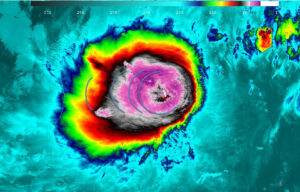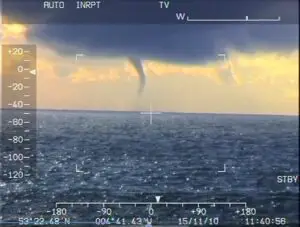Topics Covered
- Introduction to Extreme Weather Phenomena: An Overview
- Hurricanes: The Giants of the Tropical Seas
- Tornadoes: The Most Dangerous Terrestrial Vortices
- Tropical Cyclones: Characteristics and Differences from Hurricanes
- Waterspouts: When the Vortex Forms Over Water
- Mechanisms of Formation of Extreme Weather Phenomena
- How to Recognize and Distinguish Different Phenomena
- Techniques and Tools for Forecasting Extreme Weather Phenomena
- The Impact of Extreme Weather Phenomena on the Environment and Society
- Safety Measures and Behaviors to Adopt in Case of Extreme Events
- The Role of Climate Change in the Intensification of Extreme Phenomena
- Conclusion: The Importance of Awareness and Preparedness
Introduction to Extreme Weather Phenomena: An Overview
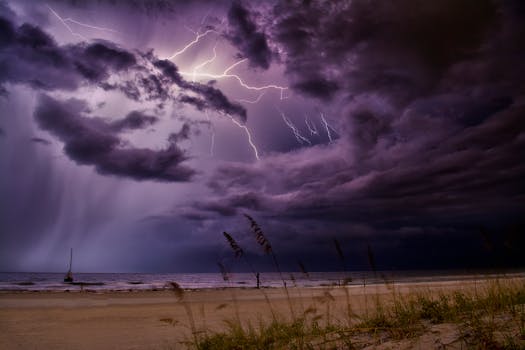
Definition and Characteristics of Extreme Weather Phenomena
Extreme weather phenomena are exceptionally intense meteorological events that occur relatively infrequently but have a significant impact on the environment and human activities. These events are characterized by particularly violent or persistent weather conditions that exceed average seasonal values and can cause substantial damage and endanger lives. Major extreme weather phenomena include hurricanes, cyclones, tornadoes, waterspouts, hailstorms, heatwaves, cold spells, prolonged droughts, and floods.
Causes and Triggers
The causes of extreme weather phenomena are complex and multifaceted. Often, these events are driven by energy imbalances in the atmosphere, caused by large-scale differences in temperature and pressure. Global warming and climate change are increasingly important factors in the intensification of these phenomena. The rise in global average temperatures provides more energy to the atmosphere, fueling more powerful and frequent meteorological events. Other factors influencing the formation of extreme phenomena include ocean currents, solar activity, and volcanic eruptions.
Social and Economic Impact
The impact of extreme weather phenomena on society and the economy is considerable. These events can cause loss of life, destruction of infrastructure, crop damage, and disruption of productive activities. The economic consequences translate into high costs for reconstruction and restoration of essential services, as well as direct losses for sectors such as agriculture, tourism, and industry. Additionally, extreme phenomena can lead to population displacement, create health emergencies, and exacerbate social inequalities, particularly affecting the most vulnerable and less prepared communities.
Hurricanes: The Giants of the Tropical Seas
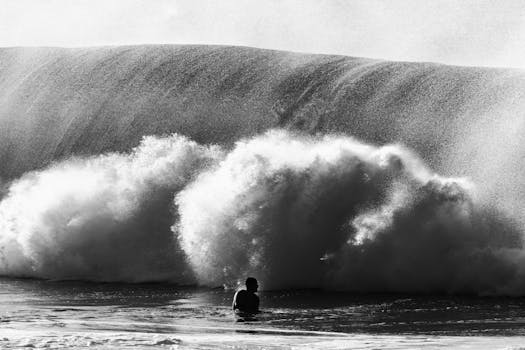
Anatomy of a Hurricane
Hurricanes, also known as tropical cyclones or typhoons depending on the geographical region, are among the most powerful and destructive weather phenomena on our planet. These gigantic atmospheric systems form over the warm waters of the tropical oceans and are characterized by a complex and well-organized structure. At the center of the hurricane is the eye, an area of relative calm with low atmospheric pressure and weak winds. Surrounding the eye is the eyewall, a band of intense convective clouds where the strongest winds and heaviest rainfall are concentrated. The hurricane’s rotation is driven by the Coriolis effect, causing it to spin counterclockwise in the Northern Hemisphere and clockwise in the Southern Hemisphere.
Conditions for Formation and Development
The genesis of a hurricane requires specific atmospheric and oceanic conditions. Three main factors are essential:
1. High ocean temperatures: The water must be at least 26.5°C (80°F) to a depth of about 50 meters (164 feet). These warm waters provide the thermal energy necessary to fuel the system.
2. Unstable atmosphere: The air above the ocean must be able to rise rapidly, promoting thunderstorm formation.
3. Low vertical wind shear: The variation in wind speed and direction with altitude must be minimal, allowing the system to maintain its vertical structure.
When these conditions persist for a sufficient period, an initial atmospheric disturbance can evolve into a tropical depression, then a tropical storm, and finally a fully developed hurricane.
Classification and Intensity of Hurricanes
Hurricanes are classified based on their intensity using the Saffir-Simpson scale, which divides them into five categories based on sustained wind speeds:
– Category 1: Winds from 119 to 153 km/h (74-95 mph)
– Category 2: Winds from 154 to 177 km/h (96-110 mph)
– Category 3: Winds from 178 to 208 km/h (111-129 mph)
– Category 4: Winds from 209 to 251 km/h (130-156 mph)
– Category 5: Winds greater than 252 km/h (157 mph)
Category 3 and higher hurricanes are considered “major” and can cause catastrophic damage. Besides wind speed, other factors such as central atmospheric pressure, storm diameter, and precipitation amount contribute to determining a hurricane’s destructive potential. The storm surge, the abnormal rise in sea level caused by winds and low pressure, often poses the greatest threat to coastal areas, causing extensive and devastating flooding.
Tornadoes: The Most Dangerous Terrestrial Vortices
Characteristics and Formation of Tornadoes
Tornadoes, also known as twisters, are among the most violent and destructive weather phenomena. These rotating air vortices extend from a thunderstorm cloud (cumulonimbus) to the ground. Their formation results from complex interactions between updrafts and downdrafts within a storm. Tornadoes are characterized by their funnel shape and winds that can exceed 400 km/h (250 mph) in the most extreme cases. Their duration is generally short, from a few minutes to about an hour, but in this time, they can cause catastrophic damage along their path.
The Fujita Scale and Tornado Intensity
Tornado intensity is classified using the Fujita scale, which divides them into six categories based on the damage they cause:
– F0: Winds up to 117 km/h (73 mph) – Light damage
– F1: Winds from 118 to 180 km/h (74-112 mph) – Moderate damage
– F2: Winds from 181 to 253 km/h (113-157 mph) – Considerable damage
– F3: Winds from 254 to 332 km/h (158-207 mph) – Severe damage
– F4: Winds from 333 to 418 km/h (208-260 mph) – Devastating damage
– F5: Winds greater than 419 km/h (261 mph) – Incredible damage
In 2007, an updated version, the Enhanced Fujita scale (EF), was introduced, maintaining the same categories but refining the damage assessment criteria.
High-Risk Areas and Prevention
Tornadoes can form in many parts of the world but are particularly frequent in the so-called “Tornado Alley” in the United States, a region that includes states like Oklahoma, Kansas, and Texas. In Italy, though less common, they occur mainly in the northern plains and along the coasts. Prevention and protection against tornadoes rely on:
1. Early warning systems: Advanced weather radar and forecasting models to identify conditions favorable for
tornado formation.
2. Public education: Informing the population on how to behave in case of a tornado warning, including the importance of having an emergency plan.
3. Shelter structures: Construction of underground shelters or reinforced rooms in homes to provide protection during a tornado.
4. Building codes: Adoption of stricter construction standards in high-risk areas to improve building resistance.
The rapid formation and movement of tornadoes make a swift response to warnings crucial, as the lead time can often be only a few minutes.
Tropical Cyclones: Characteristics and Differences from Hurricanes
Definition and Structure of Tropical Cyclones
Tropical cyclones are low-pressure atmospheric systems that form in the tropical and subtropical regions of the oceans. These extreme weather phenomena are characterized by a closed wind circulation around a low-pressure center, known as the “eye.” The structure of a tropical cyclone is similar to that of a hurricane, with a relatively calm central eye surrounded by a wall of convective clouds where the strongest winds and heaviest rainfall are concentrated. Tropical cyclones can reach diameters of hundreds of kilometers and persist for several days, causing significant damage to coastal and inland areas they cross.
Differences Between Tropical Cyclones and Hurricanes
Although the terms “tropical cyclone” and “hurricane” are often used interchangeably, there are important differences:
1. Geographical terminology: The term “hurricane” is specifically used for tropical cyclones that form in the North Atlantic Ocean and the eastern Pacific. In the Indian Ocean and the southwestern Pacific, these phenomena are called “cyclones,” while in the northwestern Pacific, they are known as “typhoons.”
2. Intensity: While all hurricanes are tropical cyclones, not all tropical cyclones reach the intensity of a hurricane. A tropical cyclone becomes a hurricane when sustained winds exceed 119 km/h (74 mph).
3. Rotation: Tropical cyclones in the Southern Hemisphere rotate clockwise, while hurricanes in the Northern Hemisphere rotate counterclockwise due to the Coriolis effect.
4. Seasonality: The Atlantic hurricane season generally runs from June to November, while tropical cyclones in other regions can form at different times of the year.
Impact and Mitigation Measures
The impact of tropical cyclones can be devastating, with similar consequences to hurricanes:
– Destructive winds: Can damage structures, topple trees, and down power lines.
– Torrential rains: Cause flooding and landslides.
– Storm surge: The abnormal rise in sea level can cause severe coastal flooding.
To mitigate the effects of tropical cyclones, various measures are adopted:
1. Early warning systems: Use of satellites and advanced weather models to predict the formation and path of cyclones.
2. Evacuation plans: Preparation of strategies to move the population from at-risk areas.
3. Resilient infrastructure: Construction of buildings and structures capable of withstanding strong winds and flooding.
4. Public education: Raising awareness among the population about the risks and actions to take in case of a cyclone.
Understanding the specific characteristics of tropical cyclones and their differences from hurricanes is crucial for effective risk management and protection of communities in regions prone to these extreme weather phenomena.
Waterspouts: When the Vortex Forms Over Water
Characteristics and Formation of Waterspouts
Waterspouts are fascinating and potentially dangerous atmospheric phenomena that occur over the surface of the water. These rotating air vortices extend from a cumuliform cloud to the water surface, creating a visible column of water vapor and droplets. Waterspouts mainly form in conditions of atmospheric instability when warm, moist air near the water surface meets cooler air aloft. This thermal contrast promotes the formation of updrafts which, in the presence of converging winds, can give rise to the characteristic vortex.
Types of Waterspouts
There are two main categories of waterspouts:
1. Fair-weather waterspouts: The most common type, forming in relatively calm weather conditions. They generally have a short lifespan (5-10 minutes) and are less intense than their terrestrial counterparts.
2. Tornadic waterspouts: Rarer and more dangerous, these develop in association with intense thunderstorms and can be considered as tornadoes moving over water. They can last longer and reach intensities comparable to terrestrial tornadoes.
Impact and Safety Measures
Although generally less destructive than terrestrial tornadoes, waterspouts can still pose a serious threat, especially to boats and coastal activities. Winds associated with a waterspout can exceed 100 km/h (62 mph), creating very rough seas and capsizing risks for smaller boats. Additionally, when a waterspout moves from the water surface to land, it can temporarily maintain its intensity, causing damage to coastal structures.
To ensure safety in the presence of waterspouts, it is important to:
1. Closely monitor weather forecasts before undertaking marine activities.
2. Immediately move away from the area if a waterspout is observed forming.
3. If on a boat, head towards the nearest port or, if not possible, move perpendicularly to the direction of the waterspout’s movement.
4. Avoid beaches and coastal areas in case of an alert for conditions favorable to waterspout formation.
Knowledge of these phenomena and adopting prudent behaviors are essential to reduce the risks associated with waterspouts, while allowing for the safe appreciation of one of nature’s most impressive spectacles.
Mechanisms of Formation of Extreme Weather Phenomena
The Role of Atmospheric Instability
Atmospheric instability is a key factor in the formation of extreme weather phenomena. This condition occurs when warm, moist air near the Earth’s surface meets cooler air aloft. This thermal contrast creates an unstable situation where the warm air tends to rise rapidly, forming powerful updrafts. These updrafts are the main driver behind the formation of intense thunderstorms, which can evolve into more extreme phenomena such as supercell thunderstorms, tornadoes, or hurricanes. The intensity of atmospheric instability is often measured through indices like CAPE (Convective Available Potential Energy), which quantifies the potential energy available for vertical convective motions.
The Influence of Pressure and Temperature Gradients
Large-scale pressure and temperature gradients play a fundamental role in the formation of extreme weather phenomena. Significant atmospheric pressure differences between adjacent geographic areas can generate intense winds and low-pressure systems. These systems, if fueled by sufficient moisture and heat, can evolve into tropical or extratropical cyclones. Similarly, strong temperature gradients, such as those occurring along weather fronts, can trigger the formation of violent thunderstorms and instability lines. The phenomenon of the “cold front” is particularly associated with rapid changes in weather conditions and can be a precursor to extreme meteorological events.
The Role of Orography and Ocean Currents
Terrain topography and ocean currents significantly influence the formation and intensification of extreme weather phenomena. Mountain ranges can force air to rise, triggering the formation of clouds and intense precipitation, a process known as “orographic lift.” This mechanism can lead to torrential rains and flash floods in mountainous regions. Ocean currents, on the other hand, play a crucial role in transferring heat and moisture into the atmosphere. For example, the Gulf Stream in the North Atlantic provides the thermal energy necessary for the development of hurricanes. Similarly, the El Niño phenomenon in the Pacific can alter global weather patterns, influencing the frequency and intensity of extreme events like droughts, floods, and tropical cyclones.
How to Recognize and Distinguish Different Phenomena
Visual Characteristics and Warning Signs
Recognizing different extreme weather phenomena is crucial for safety and preparedness. Each type of event presents distinct visual characteristics and warning signs:
Hurricanes:
– Gradually darkening and threatening sky
– Sudden increase in wind speed
– Very rough sea with high waves
– Intense and persistent rainfall
– Rapidly falling atmospheric pressure
Tornadoes:
– Funnel cloud extending from the sky to the ground
– Noise similar to a loud roar or a freight train
– Debris flying in a circular motion
– Green-dark
or black-green sky
– Large hail
Tropical Cyclones:
– Similar to hurricanes, with a central “eye” visible from satellite images
– Intense circular winds over a very large area
– Spiral clouds extending for hundreds of kilometers
Waterspouts:
– Water column rising from the sea surface to a cumuliform cloud
– Often visible in relatively clear sky conditions
– Can form suddenly and dissipate quickly
Identification Tools and Technologies
Accurate identification of extreme weather phenomena relies on advanced technologies:
1. Weather radars: Use radio waves to detect precipitation and air movements, crucial for identifying the formation of intense thunderstorms, hurricanes, and tornadoes.
2. Weather satellites: Provide high-resolution images of cloud structures and large-scale atmospheric systems, essential for tracking hurricanes and tropical cyclones.
3. Automatic weather stations: Measure parameters such as atmospheric pressure, wind speed, and precipitation, fundamental for detecting conditions favorable to extreme phenomena.
4. Radiosondes: Balloon-borne instruments measuring temperature, humidity, and winds aloft, useful for assessing atmospheric instability.
5. Numerical weather prediction models: Process data from various sources to predict the formation and evolution of extreme weather phenomena.
Key Differences Between Phenomena
Understanding the differences between various phenomena is essential for correct identification:
– Size and duration: Hurricanes and tropical cyclones are the largest, with diameters of hundreds of kilometers and lasting days. Tornadoes are more localized and brief, while waterspouts occupy an intermediate position.
– Wind speeds: Hurricanes can sustain winds exceeding 250 km/h (155 mph) for hours, while tornadoes, though shorter, can reach even higher speeds for brief periods.
– Formation environment: Hurricanes and cyclones form exclusively over vast warm water bodies. Tornadoes can form on land or water, while waterspouts are exclusively marine phenomena.
– Impact: Hurricanes and cyclones cause damage over large areas primarily from wind, rain, and storm surge. Tornadoes cause intense but localized damage mainly due to extreme winds.
The ability to distinguish these phenomena is crucial for adopting appropriate safety measures and effectively managing meteorological emergencies.
Techniques and Tools for Forecasting Extreme Weather Phenomena
Numerical Weather Prediction Models
Numerical weather prediction models are one of the most advanced and powerful tools for forecasting extreme weather phenomena. These models use complex mathematical equations to simulate atmospheric behavior and predict future evolution. Among the most well-known are:
– ECMWF (European Centre for Medium-Range Weather Forecasts): Considered one of the most accurate models worldwide, providing forecasts up to 15 days.
– GFS (Global Forecast System): An American model offering global forecasts up to 16 days.
– ICON (Icosahedral Nonhydrostatic): A high-resolution German model for short- and medium-term forecasts.
These models are continuously updated with data from weather stations, satellites, radars, and radiosondes, allowing for increasingly precise forecasts. For extreme phenomena, ensemble models, or multiple simulations with slight variations in initial conditions, are often used to evaluate the probability of different scenarios.
Satellite and Radar Technologies for Monitoring
Satellite and radar technologies play a crucial role in monitoring and short-term forecasting of extreme weather phenomena:
1. Weather satellites:
– Geostationary satellites (such as METEOSAT): Provide continuous images of large geographical areas.
– Polar-orbiting satellites (such as NOAA): Offer high-resolution images and detailed atmospheric data.
These satellites allow for observing the formation and evolution of cloud systems, hurricanes, and tropical cyclones, providing crucial information on their structure and intensity.
2. Weather radars:
– Doppler radars: Measure not only precipitation intensity but also wind speed and direction within storms.
– Dual-polarization radars: Provide detailed information on the type and size of atmospheric particles.
Radars are particularly effective in detecting the formation of intense storm cells, supercells, and potential tornadoes, allowing for warnings to be issued 10-30 minutes in advance.
Early Warning Systems and Monitoring Networks
Early warning systems integrate data from various sources to provide timely alerts to the population:
1. Networks of automatic weather stations: Measure real-time parameters such as temperature, pressure, humidity, and wind speed.
2. Lightning detectors: Monitor electrical activity in storms, an indicator of potential violent phenomena.
3. Rain gauge networks: Essential for predicting floods and flash floods.
4. Oceanographic buoys: Measure crucial marine parameters for predicting hurricanes and tsunamis.
5. Emergency communication systems: Like the Italian national alert system IT-Alert, which sends direct text messages to mobile phones in at-risk areas.
Integrating these technologies with advanced forecasting models and the expertise of meteorologists allows for increasingly precise and timely alerts. The challenge remains to continuously improve forecast accuracy, especially for localized phenomena like tornadoes, and to effectively communicate risk to the population, promoting a culture of prevention and preparedness for extreme events.
The Impact of Extreme Weather Phenomena on the Environment and Society
Environmental Consequences of Extreme Phenomena
Extreme weather phenomena have a significant and often devastating impact on the natural environment. Hurricanes, cyclones, and violent storms can cause:
– Mass deforestation: Intense winds topple trees over large areas, altering forest ecosystems.
– Coastal erosion: Sea level rise and storm waves erode coasts, changing the habitat of numerous species.
– Alteration of marine habitats: Increased water temperature and changes in ocean currents affect marine life, with potential repercussions on coral reefs and biodiversity.
– Changes to hydrological cycles: Prolonged droughts or intense precipitation alter water regimes, affecting the availability of water resources and ecosystem stability.
– Impact on fauna: Extreme events can cause forced migrations or the death of many animals, altering wildlife population balances.
These environmental changes not only threaten biodiversity but can also trigger a series of cascading effects that influence the global climate and ecosystems on a larger scale.
Socio-Economic and Public Health Impact
The impact of extreme weather phenomena on society and the economy is multifaceted and often long-lasting:
1. Damage to infrastructure:
– Destruction of buildings, roads, and bridges
– Interruption of power and communication networks
– Damage to health and educational facilities
2. Economic consequences:
– Losses in the agricultural sector due to floods or droughts
– Interruption of productive and commercial activities
– Increased insurance and reconstruction costs
3. Impact on public health:
– Increase in waterborne diseases after floods
– Psychological stress and post-traumatic disorders in affected populations
– Food security risks due to crop damage and distribution infrastructure
4. Displacements and migrations:
– Mass evacuations during extreme events
– Long-term migrations from frequently affected areas
– Pressures on resources and services in host areas
5. Social inequalities:
– Vulnerable and less affluent communities are often the most affected
– Difficulty accessing emergency and reconstruction services for the most disadvantaged
Adaptation and Mitigation Strategies
To address the growing impact of extreme weather phenomena, global and local adaptation and mitigation strategies are needed:
1. Resilient urban planning:
– Designing buildings and infrastructure resistant to extreme events
– Creating urban green spaces to mitigate the effects of heatwaves and floods
2. Sustainable water resource management:
– Implementing sustainable urban drainage systems
– Improving irrigation techniques in agriculture
3. Ecosystem protection:
– Restoring natural barriers such as mangroves and coastal dunes
– Reforestation programs to increase CO2 absorption and reduce soil erosion
4. Early warning systems and emergency plans:
– Improving forecasting and monitoring technologies
– Training the population on evacuation and safety procedures
5. Greenhouse gas emission reduction policies:
– Incentives for adopting renewable energy
– Promotion of sustainable agricultural practices
6. International cooperation:
– Sharing knowledge and technologies between countries
– Financial support for climate adaptation in the most vulnerable nations
Implementing these strategies requires coordinated efforts by governments, international organizations, the scientific community, and civil society. Only through an integrated and long-term approach can we reduce the vulnerability of communities and ecosystems to the increasingly frequent and intense impacts of extreme weather phenomena.
Safety Measures and Behaviors to Adopt in Case of Extreme Events

Preparation and Preventive Planning
Preparation and preventive planning are essential for effectively facing extreme weather events. Here are some key measures to adopt:
1. Family emergency plan: Develop a detailed plan that includes:
– Safe meeting points for family members
– Emergency contact list
– Evacuation procedures
–
Ready-to-use emergency kit
2. Emergency kit: Prepare a kit containing:
– Potable water (at least 4 liters per person per day for 3 days)
– Non-perishable food
– Flashlight and extra batteries
– Battery-powered radio
– First aid kit
– Essential medications
– Blankets and spare clothes
– Important documents in waterproof containers
3. Home maintenance:
– Regularly check the roof and gutters
– Prune trees near the house
– Install protection systems such as shutters for windows
4. Information and training:
– Know the specific risks of your area
– Attend first aid courses
– Familiarize yourself with local alert systems
Behaviors to Adopt During the Event
During an extreme weather event, it is crucial to follow certain guidelines to maximize safety:
1. In case of a hurricane or cyclone:
– Stay inside solid buildings, away from windows and doors
– Close all internal doors and reinforce external ones
– Shelter on the lowest floor of the structure, preferably in an internal room
– Listen to official communications via radio or other authorized channels
2. In case of a tornado:
– Seek shelter in a basement or an internal room on the ground floor
– Avoid large spaces such as auditoriums or gyms
– Protect your head with your arms and crouch near the wall
– If outdoors, find a ditch or low area and lie down flat
3. In case of flooding:
– Evacuate at-risk areas immediately if ordered
– Never walk or drive through flooded streets
– Move to higher floors of the building if water enters the house
– Stay away from downed power lines and moving water
4. In case of a waterspout:
– If on a boat, head immediately to shore
– If on the beach, quickly move away from the water
– Seek shelter in solid structures, avoiding tents or light structures
Post-Event Measures and Recovery
After an extreme weather event, it is important to take precautions to ensure safety during the recovery phase:
1. Damage assessment:
– Wait for the authorities’ clearance before re-entering evacuated areas
– Carefully inspect buildings for structural damage before entering
– Be cautious of downed power lines, gas leaks, and hazardous debris
2. Food and water safety:
– Use only safe water for drinking and cooking, boiling water if necessary
– Discard food that may have been contaminated by floodwater
– Check the refrigerator’s functioning and discard perishable food if the electricity was out for more than 4 hours
3. Cleaning and disinfection:
– Wear personal protective equipment during cleaning
– Disinfect all surfaces that have come into contact with floodwater
– Thoroughly dry the premises to prevent mold formation
4. Psychological support:
– Be aware of post-traumatic stress symptoms
– Seek professional help if necessary
– Participate in community support activities
5. Documentation and insurance:
– Photograph and document all damage for insurance claims
– Contact your insurance company promptly
– Keep all receipts related to repair and replacement expenses
Adopting these safety measures and responsible behaviors can make the difference between life and death during extreme weather events. Preparation, prompt reaction, and caution in the post-event phase are key elements to mitigating risks and facilitating recovery, both individually and as a community.
The Role of Climate Change in the Intensification of Extreme Phenomena
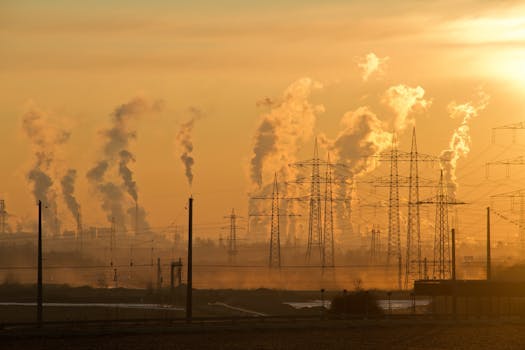
Global Temperature Increase and Its Impact on Weather Phenomena
Global warming, mainly caused by anthropogenic greenhouse gas emissions, is playing a fundamental role in the intensification of extreme weather phenomena. The rise in global average temperatures has several direct consequences on weather systems:
1. More energy in the atmosphere: Warmer air can hold more moisture, providing more “fuel” for intense storms and heavy precipitation.
2. Alteration of atmospheric circulation patterns: The uneven warming of the planet is changing large-scale atmospheric circulation patterns, influencing the formation and movement of weather systems.
3. Sea level rise: Melting ice and thermal expansion of oceans increase the risk of coastal flooding during extreme events.
4. Greater atmospheric instability: Higher temperatures favor greater vertical instability in the atmosphere, a condition conducive to the development of violent thunderstorms and tornadoes.
Changes in the Frequency and Intensity of Extreme Events
Climate change is significantly influencing the frequency, intensity, and geographical distribution of extreme weather phenomena:
1. Hurricanes and tropical cyclones:
– Increased average intensity of hurricanes
– Tendency towards more rapid intensification
– Possible expansion of affected geographical areas
2. Heatwaves:
– Increased frequency, duration, and intensity of heatwaves
– Expansion of areas subject to extreme temperatures
3. Intense precipitation:
– Increase in extreme rainfall events in many regions
– Greater risk of flash floods and floods
4. Drought:
– Longer and more intense drought periods in some areas
– Increased risk of wildfires
5. Extreme winter events:
– Paradoxically, some regions are experiencing more intense snow events due to increased moisture in the atmosphere
Future Impacts and Forecast Scenarios
Climate projections indicate that without significant reductions in greenhouse gas emissions, the intensification of extreme weather phenomena will continue in the future:
1. Emission scenarios: Climate models show that impacts will be more severe in higher emission scenarios.
2. Tipping points: There is a risk of crossing climate “tipping points” that could trigger irreversible changes in global weather systems.
3. Differentiated regional impacts: Some regions will experience more severe impacts than others, with particular vulnerability for coastal areas and regions already prone to extreme weather conditions.
4. Adaptation and mitigation: The capacity of societies and ecosystems to adapt will be crucial, but mitigating emissions remains essential to limit future intensification of extreme events.
5. Uncertainties and challenges in modeling: Despite advances in climate modeling, uncertainties remain in detailed local impact prediction, requiring a precautionary approach in planning and risk management.
Understanding the link between climate change and extreme weather phenomena is essential for developing effective adaptation and mitigation strategies. The scientific community, policymakers, and civil society must collaborate to address this global challenge, implementing measures to reduce greenhouse gas emissions and increase community resilience to the growing impacts of extreme weather phenomena.
Conclusion: The Importance of Awareness and Preparedness

Education as a Prevention Tool
Awareness and education are the first and fundamental steps in preventing and managing the risks associated with extreme weather phenomena. An informed public can:
– Recognize the warning signs of an imminent event
– Understand and correctly follow alerts and instructions from authorities
– Adopt proactive behaviors for personal and community safety
It is essential to promote educational programs at all levels, from schools to local communities, including:
1. Information on the different types of extreme weather phenomena and their potential impacts
2. Personal and family preparedness techniques
3. Basic notions on climate change and its role in the intensification of extreme events
4. Practical exercises and simulations of emergency scenarios
The goal is to create a culture of resilience, where every citizen feels responsible and prepared to face the challenges posed by extreme weather phenomena.
Preparation as the Key to Resilience
Preparation is a crucial element to mitigate the impacts of extreme weather phenomena and build resilient communities. This process involves various aspects:
1. Long-term planning:
– Development of updated and regularly tested emergency plans
– Implementation of building codes that consider climate risks
– Investments in resilient infrastructure, such as sustainable urban drainage systems
2. Individual and family preparation:
– Creation and maintenance of emergency kits
– Definition of family evacuation plans
– Adequate insurance for home and belongings
3. Strengthening early warning systems:
– Improvement of forecasting and monitoring technologies
– Implementation of effective communication systems to reach the entire population
4. Institutional collaboration:
– Coordination between local, national, and international entities
– Sharing best practices and resources
5. Ecosystem-based adaptation:
– Protection and restoration of natural ecosystems that act as barriers against extreme events
– Integration of nature-based solutions in urban planning
Preparation is not a one-time action but a continuous process that requires constant updates and improvements based on new scientific knowledge and experiences gained.
Towards a Resilient Future: Challenges and Opportunities
Facing the growing threat of extreme weather phenomena in a climate change context presents both challenges and opportunities:
Challenges:
– Uncertainty in detailed local impact prediction of climate change
– Need for substantial investments in adaptation and mitigation
–
Overcoming psychological and cultural barriers to action
Opportunities:
– Development of new technologies and innovative solutions for climate resilience
– Creation of jobs in the adaptation and risk management sector
– Strengthening social cohesion through community preparedness
To build a resilient future, an integrated approach is needed that combines:
1. Ambitious climate action: Drastic reduction of greenhouse gas emissions to limit future intensification of extreme events
2. Proactive adaptation: Implementation of adaptation measures based on future climate projections
3. Technological innovation: Investments in research and development to improve forecasting and response capabilities
4. International cooperation: Sharing knowledge, resources, and responsibilities globally
5. Community empowerment: Active involvement of citizens in planning and implementing resilience strategies
In conclusion, awareness and preparation are fundamental elements to face the growing challenge of extreme weather phenomena. Only through a collective commitment involving institutions, the scientific community, and civil society can we build a future where our communities are not only able to withstand the impacts of extreme events but also thrive in the face of the climatic challenges of the 21st century.

